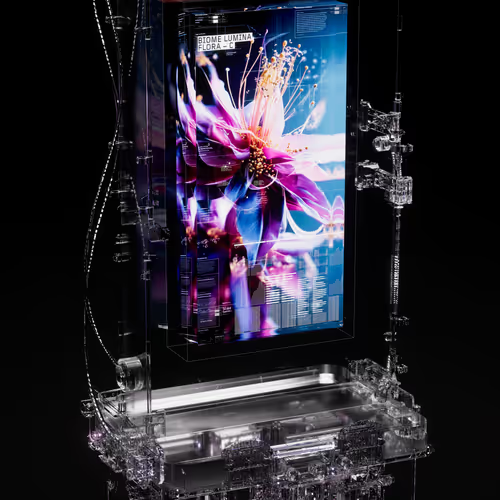Luminiflorus Spectabilis, from Latin 'lumen' (light), 'florus' (flower), and 'spectabilis' (remarkable), is a rare, stable bioluminescent species in the Petalum Glimmera cluster. It features multi-layered, semi-translucent, gel-like petals with a blue-to-amber gradient and crystalline droplets. The radially symmetrical inflorescence surrounds a pollen-rich, self-glowing central structure. Stems, 30-50 cm tall and 15-50 g, sway to disperse light. Bioluminescence spans 420-490 nm, driven by luciferin-luciferase in epidermal cells and microdroplets, producing a blue-green glow intensified at night. Native to tropical rainforest canopies (15-30°C), it thrives in humid shade, attracting nocturnal moths and bats for cross-pollination. Taxonomically distinct, it dynamically moves petals and emits unique spectra, enhancing nocturnal pollinator activity and canopy biodiversity.
